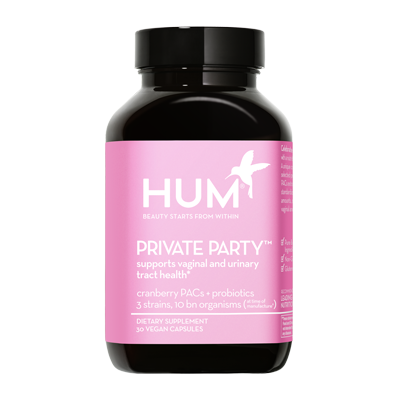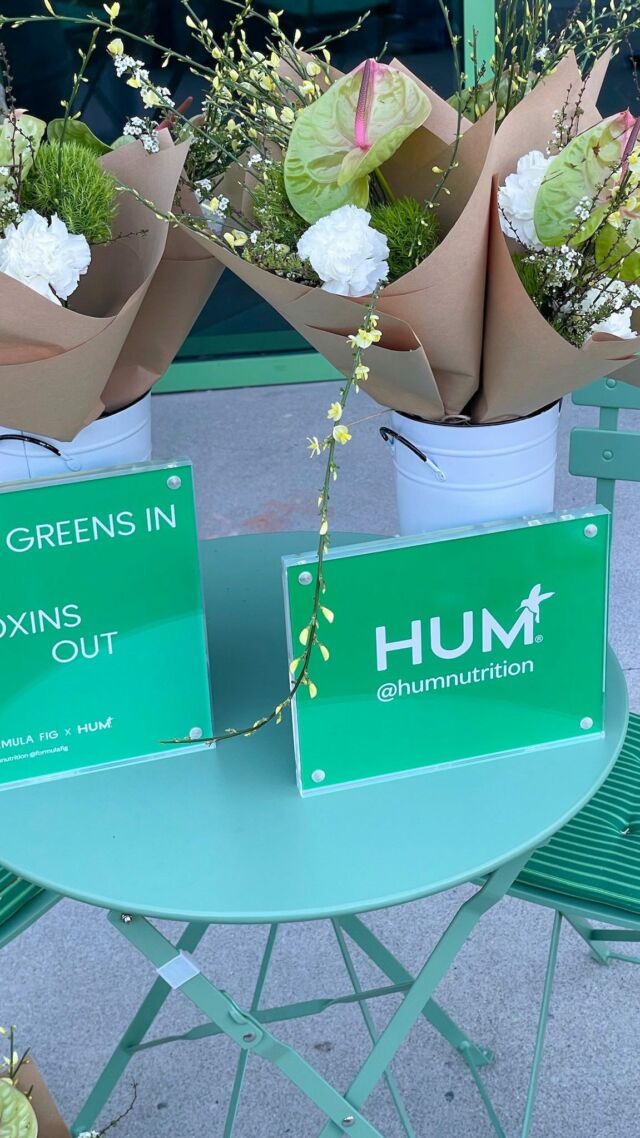Cranberry PACs Are Like Magic for Your Urinary Tract, According to An RD
Want to improve your overall urinary tract health? Cranberry PACs can help. Gaby Vaca-Flores, RD, HUM’s educational specialist, breaks down everything you need to know about cranberry and urinary tract health.
You’ve heard it a million times before: Drinking cranberry juice can help cure your UTI. But what’s the real deal with cranberry and urinary tract health? Although cranberries are 90 percent water, they’re loaded with a powerful compound that promotes a healthy urinary tract, called cranberry PACs.
Proanthocyanidins, or PACs, are flavonoids (which are plant compounds found in deep-colored fruits and vegetables). They are rich in antioxidants, which help fight inflammation and support a healthy system. But how exactly do these particular flavonoids affect your urinary health? Find out the connection between cranberry and urinary tract health, how cranberry PACs work, and if you should be consuming fresh cranberries, cranberry juice, or a cranberry urinary tract supplement for improved health down there.
What are Cranberry PACs?
PACs are phytochemicals belonging to the polyphenol family. They are also sometimes referred to as oligomeric proanthocyanidins (OPCs), flavonoids, and condensed tannins.
In the body, PACs are often called ‘offense and defense’ compounds for their ability to promote health in a number of ways. They play an offensive role in protecting your body by exerting themselves as antibacterial and antioxidants. But they also play defensive roles by being cardio- and neuroprotective.
PACs are naturally present in many plants including flowers, seeds, and bark. They’re also found in everyday foods including berries with deep hues like black elderberry, blueberries, and cranberries. In fact, PACs help give these foods their blue, red, and purple pigmentation.
Cranberries, in particular, are a goldmine for PACs because they are loaded with A-type proanthocyanidins. A-type PACs are known to be the best for supporting urinary tract health.
How Cranberry PACs Can Support Urinary Tract Health
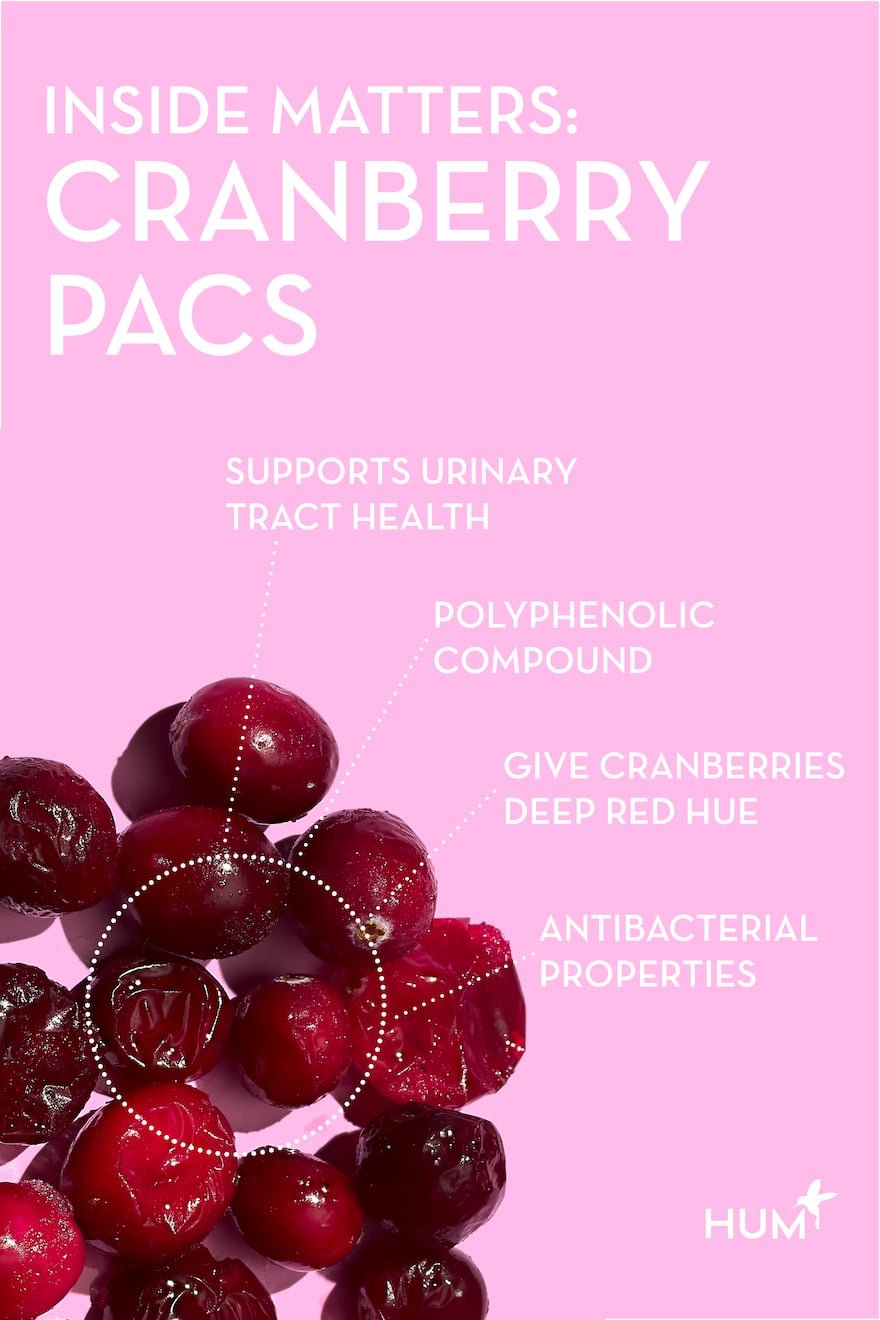
Why is it so important to have a healthy urinary tract system? The body relies on a healthy urinary tract to filter blood and remove waste through urine.
Unfortunately, imbalances or an accumulation of bacteria, such as Escherichia coli, can compromise the urinary tract. Things like dehydration, going too long without peeing, spinal injuries, and hormonal changes can all cause imbalances. Signs that you may have an imbalance include:
- Uncomfortable + frequent urination
- Pressure in the pelvis or lower abdomen
- Dark, cloudy, or bloody urine
(Note: If you see blood in your urine, consult your doctor immediately.) Luckily, cranberry PACs may help prevent your urinary tract from getting to that point.
Cranberry PACs are polyphenolic compounds that belong to a specific class of polyphenols called flavonoids. Flavonoids, such as cranberry PACs, can benefit the body in a variety of ways. One beneficial trait is that they function as antimicrobial agents. There are several ways that flavonoids help provide protection against bacteria. One of the main ways is by disrupting the bacteria’s bioactivities.
For instance, cranberry PACs help disrupt the ability of unwanted bacteria from attaching to the inner lining of the bladder and urethra. As less bacteria accumulates, urinary tract issues become more unlikely.
Benefits of Drinking Cranberry Juice vs. Eating Fresh Cranberries vs. Taking Cranberry Supplements for Urinary Tract Health
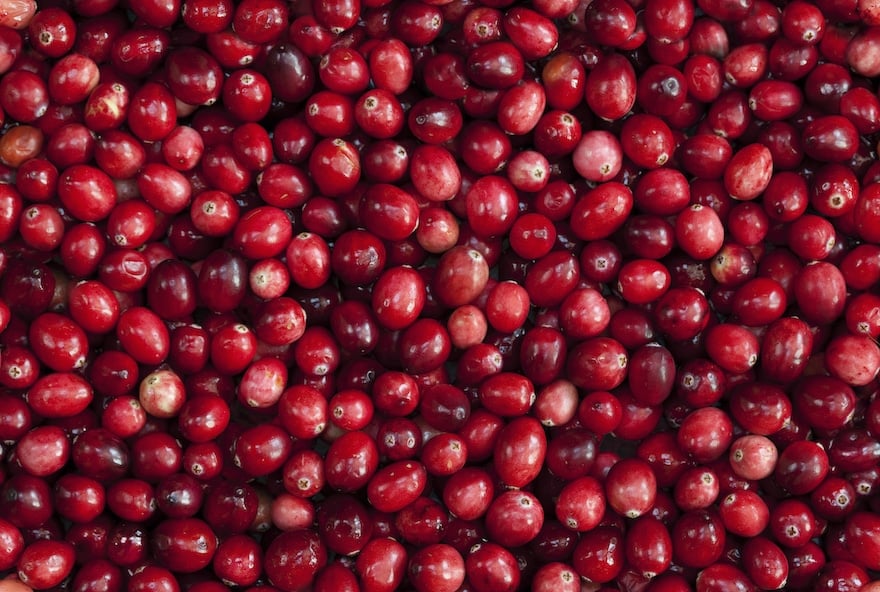
Turns out, the old myths have some truth to them. Drinking cranberry juice, or even eating fresh cranberries can provide some benefits towards your urinary tract health.
Several studies suggest that a daily dose of 36 milligrams of cranberry PACs is effective towards supporting a healthy urinary tract. It’s estimated that about seven ounces of cranberry juice can provide 17.8 to 46 milligrams of PACs. Additionally, it is estimated that 80 grams of fresh cranberries can deliver 106 to 293 milligrams.
Despite the benefits of drinking cranberry juice, there are a few downsides to getting PACs from juice. The amount of cranberry PACs in juice depletes during processing. Plus, many cranberry juices, like cranberry juice cocktail, are not 100-percent juice beverages and are high in sugars, which may not be the best for your urinary tract or overall health.
Of course, eating fresh cranberries is preferred over drinking juice, especially since fresh berries deliver high quantities of antioxidants. But keep in mind that cranberry PAC levels decline during the natural ripening process, so you may not always be getting a consistent amount. Cranberries can also be rather bitter when eaten fresh, so it may not be the most sustainable option for some.
Because getting a daily glass of cranberry juice or serving of fresh cranberries isn’t very convenient, cranberry pills are another option.
What to Know About Cranberry Supplements
A reliable (and easy) way to get an effective dose of PACs is by opting for a concentrated cranberry extract supplement. Cranberry extracts can pack PACs in standardized amounts that are proven to benefit the urinary tract.
As an added bonus, a randomized trial found that taking a cranberry supplement was twice as cost-effective as drinking cranberry juice for urinary tract health.
Who Should Try Cranberry PACs?
Cranberry PACs are especially helpful for people who are concerned about their urinary tract health. Additionally, a meta-analysis of over a dozen trials found that cranberry PACs were most effective in women with frequent urinary tract issues.
The good news? Cranberries, whether in whole, juice, or extract form, are considered safe to add to most routines, according to the FDA.
However, there’s mixed evidence suggesting that people who are predisposed to kidney stones should avoid excessive amounts of cranberries. Cranberries contain high levels of calcium oxalates, a mineral that when accumulated, can lead to kidney stones. If you’re prone to kidney stones, consult your doctor before adding cranberries or cranberry-containing products to your daily routine.
What to Look for In A Cranberry Supplement
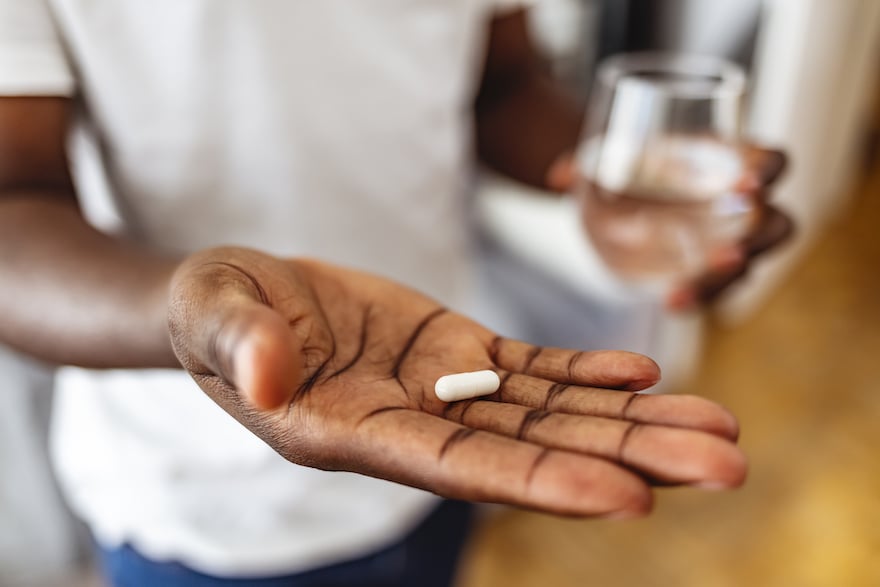
If you’re interested in adding a cranberry supplement to your daily routine, there are a few things to keep in mind. First, you’ll want to choose a cranberry supplement that provides 36 milligrams of PACs, as this is a standardized and effective dose for urinary tract health.
Looking to add cranberry PACs to your routine? HUM Nutrition’s Private Party delivers an effective dose of cranberry PACs. Plus, Private Party pairs these cranberry PACs with three well-researched strains of probiotics to help support a healthy vaginal microbiome in addition to the urinary tract. (Psst: 80 percent of women who tried Party Party felt very satisfied or satisfied with their results.)
The Takeaway
Proanthocyanidins, or PACs, are compounds that are naturally occurring in a number of plants, vegetables,and fruits. There’s strong evidence suggesting that PACs from cranberries can support urinary tract health. Plus, they’re easy to add to most routines—whether in their whole or extract form. If you’re looking for a more convenient way to get your daily dose of cranberry PACs in, HUM Nutrition’s Private Party contains the standardized amount plus probiotics beneficial for vaginal health.
